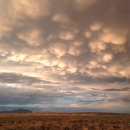Impacts of mining exploration and development on sagebrush sagebrush
The western United States’ sagebrush country encompasses over 175 million acres of public and private lands. The sagebrush landscape provides many benefits to our rural economies and communities, and it serves as crucial habitat for a diversity of wildlife, including the iconic greater sage-grouse and over 350 other species.
Learn more about sagebrush ecosystems and wildlife: a pilot study
Funding Year | Amount | Location |
FY22 | $50,000 | Nevada |
FY23 | $50,000 | Nevada |
Project Description
Mining activities are increasing within sagebrush ecosystems and likely have adverse effects on wildlife species occupying imperiled habitats, yet the impacts of mining on sagebrush obligate species have not been quantified. This pilot study is initiated to leverage data collected by U.S. Geological Survey and Nevada Department of Wildlife, combined with survey data representing trends in avian sagebrush obligate species, to examine the effects of mining activities on vegetation cover and avian abundance.
Partners
U.S. Geological Survey, Nevada Department of Wildlife


